

Winnipeg Folk Fest goes all out for 50th year
Record-breaking crowds, park upgrades, and highway renamed
Jesse Brogan, staff
T
he Winnipeg Folk Festival turned 50 this year, and the province celebrated with more than just music. The golden anniversary brought on shiny new highway signs, over $1 million in park upgrades and nearly 80,000 people in attendance.
The four-day celebration, which ran from July 10 to 13, outdid previous attendance records with 79,000 total festivalgoers. There was a mix of attendees, volunteers, artists and donors. The full sellout included weekend passes, camping tickets, and individual day passes for the busy Friday and Saturday lineups. In short, Folk Fest was the hottest (and maybe smokiest) ticket in town.
The milestone did not just mean bigger crowds. This year, the Manitoban government contributed to the festival, announcing over $1.1 million in upgrades to Birds Hill Provincial Park, the longtime home of the festival. The funding was put toward planting new trees, improved campground roads, renovated washrooms in the group-use areas and new sewer systems. A recently completed water treatment plant was also part of the upgrade plan.
“Winnipeg Folk Festival is one of Canada’s premier outdoor music festivals and part of the reason for this success is the hundreds of volunteers that return year after year,” said Transportation and Infrastructure Minister Lisa Naylor.
To top it off, the province also made a symbolic gesture by officially naming a stretch of Provincial Trunk Highway 59 “Winnipeg Folk Fest
Volunteer Way.” It is a tribute to the hundreds of volunteers who return every summer to help with everything from stage operations to safety patrols.
“Seeing our volunteers acknowledged this way, on the eve of our 50th festival, honours the heart and energy they bring to the festival each year. They create the community and culture that draws people to our event. Without their dedication, there is no Winnipeg Folk Festival,” said Valerie Shantz, executive director at the Winnipeg Folk Festival.
“These commemorative signs are just a small way that our government is acknowledging the legacy of this festival and the importance of arts and culture in Manitoba,” said Naylor.
The festival had a classic lineup, with the opening night kicking off with Winnipeg-born and Folk Fest staple Fred Penner. Additional lineups featured big-name acts like Lake Street Dive, Jason Isbell, Mavis Staples, Peach Pit and local legend Bruce Cockburn, who even walked away with a key to the city.
This year also marked the launch of a storytelling series, supported by government funding, designed to capture and share the stories that have shaped Folk Fest over the past five decades. Between the music, memories and upgrades, the festival seemed to be setting the stage for another 50 years of sunshine, mud and music in the meadow.
Mark your calendars, the Winnipeg Folk Festival will return to Birds Hill Park from July 9 to 12, 2026.
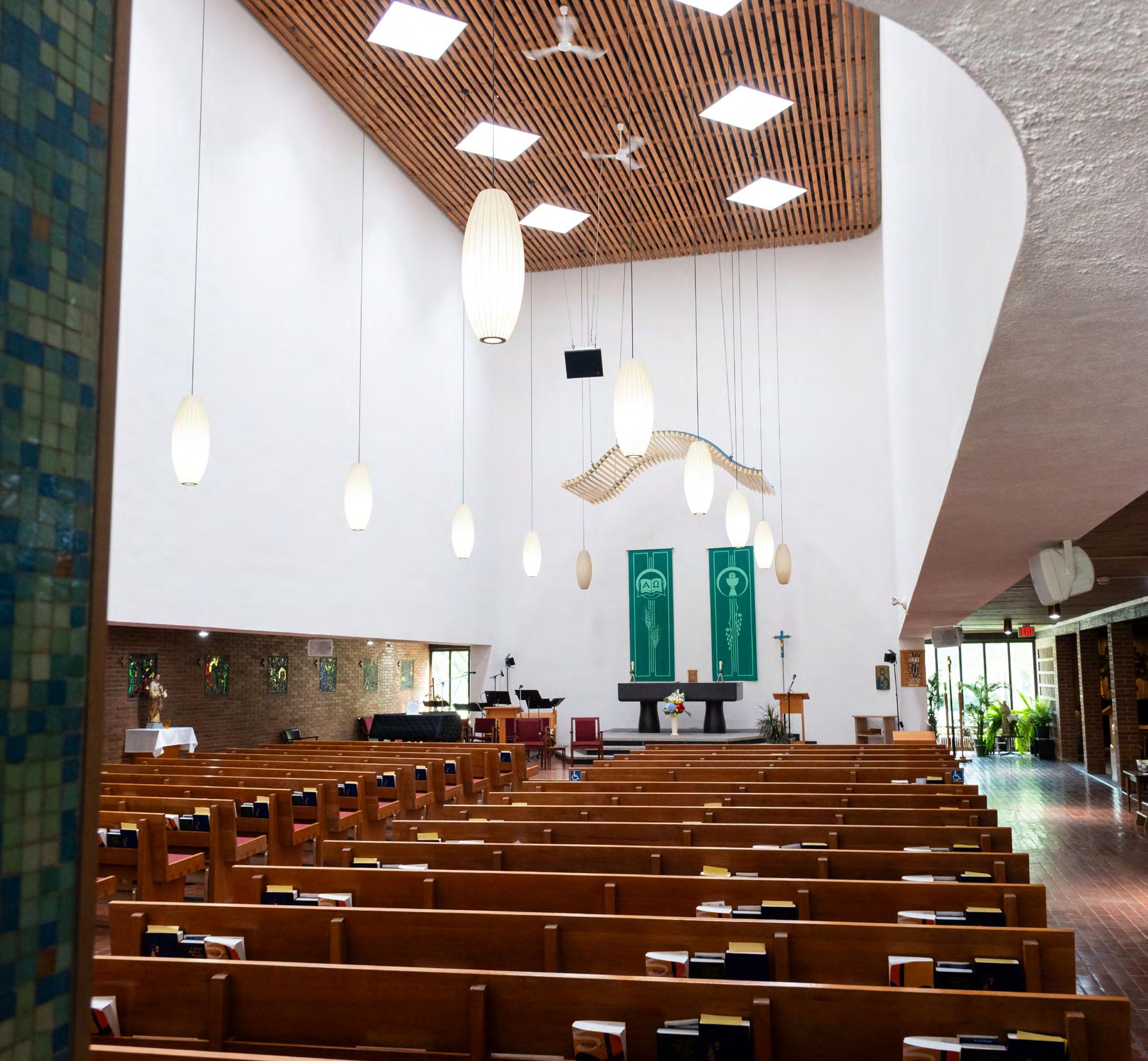
Final mass marks closure of St. Paul’s Christ the King Chapel for 2024-25
Roy Albright Obah, staff
Christ the King Chapel of St. Paul’s College has officially closed its on-campus mass services for the 2024-25 academic year, marking the end of a spiritually fulfilling season for Catholic faculty and students.
On June 29, the chapel held its final mass of the term, a celebration that brought together the campus community to reflect, give thanks and prepare for the break ahead. The mass opened with remarks from campus ministry director, Eliude Cavalcante, who expressed gratitude on behalf of the leadership of Christ the King Chapel to all who contributed to the success of weekday and Sunday masses throughout the year.
St. Paul’s priest chaplain, Fr. Mark Filips, delivered a sermon focused on openness, inviting congregants to listen to others, embrace new beginnings and move forward with hope rather than fear or doubt.
Reflecting on the year’s highlights, Fr. Filips stated, “We have a phenomenal choir that’s all volunteer, but their talent is amazing under the direction of David, who is our choirmaster and pianist.”
He went on to share one of the most touching moments of the year – the visit of the former archbishop, Richard Gagnon, who “came to celebrate his final mass with us here.” Describing it as an “emotional moment,” Fr. Filips acknowledged the archbishop’s continued support
for the college and his deep commitment to engaging with young people.
Among other memories, Fr. Filips recalled the recent outdoor mass at King’s Park, which he described as “intimate and [...] very beautiful.”
Although on-campus masses will pause for the summer, the chapel continues to support the local Catholic community. Fr. Filips emphasized that while sacraments will not be offered during the break, “the chapel itself will still be open for people to come in and pray.”
Students are encouraged to connect with nearby churches during the break. “There are two parishes relatively close by — Mary Mother and Saint
PHOTO BY MIKE THIESSEN / STAFF


EDITOR-IN-CHIEF Mikaela Warkentin editor@themanitoban.com
BUSINESS MANAGER Alice Teufack accounts@themanitoban.com
BUSINESS SUPPORT MANAGER Joshua Herold ads@themanitoban.com
EDITORIAL
MANAGING EDITOR Peace Ifeanyi me@themanitoban.com
COPY EDITOR Eden Quiring copy@themanitoban.com
NEWS EDITOR Jesse Brogan news@themanitoban.com
NEWS EDITOR Roy Albright Obah news@themanitoban.com
RESEARCH & TECHNOLOGY EDITOR Mansura Meghla research@themanitoban.com
COMMENT EDITOR Quinn Mayhew comment@themanitoban.com
ARTS & CULTURE EDITOR Boris Tsun Hang Leung arts@themanitoban.com
SPORTS EDITOR Abdul-Jalilu Ahmed sports@themanitoban.com
DESIGN
DESIGN EDITOR Deveney Jarrow design@themanitoban.com
GRAPHICS EDITOR Emma Gillich graphics@themanitoban.com
AUDIO AND VIDEO
AUDIO EDITOR Max Reid audio@themanitoban.com
PHOTO EDITOR Mike Thiessen photo@themanitoban.com
VIDEO EDITOR Zulkifl Rafah video@themanitoban.com
DIGITAL MEDIA EDITOR Faisal Rahman social@themanitoban.com
The Manitoban is the official student newspaper of the University of Manitoba. It is published monthly during the summer and each week of regular classes during the academic year by the Manitoban Newspaper Publications Corporation.
The Manitoban is an independent and democratic student organization, open to participation from all students. It exists to serve its readers as students and citizens.
The Manitoban is a member of the Canadian University Press, and our journalistic standards can be found on the Manitoban’s website.
The newspaper’s primary mandate is to report fairly and objectively on issues and events of importance and interest to the students of the University of Manitoba, to provide an open forum for the free expression and exchange of opinions and ideas and to stimulate meaningful debate on issues that affect or would otherwise be of interest to the student body and/ or society in general. The Manitoban serves as a training ground for students interested in any aspect of journalism.
Students and other interested parties are invited to contribute to any section of the newspaper. Please contact the appropriate editor for submission guidelines.
The Manitoban reserves the right to edit all submissions and will not publish any material deemed by its Editorial Board to be discriminatory, racist, sexist, homophobic or transphobic, ableist or libellous.
Opinions expressed in letters and articles are solely those of the authors. Editorials in the Manitoban are signed and represent the opinions of the writer(s), not necessarily those of the Manitoban staff, Editorial Board or the publisher.
A “volunteer staff” member is defined as a person who has had three volunteer articles, photographs or pieces of art of reasonable length and/ or substance published in the current publishing year of the Manitoban
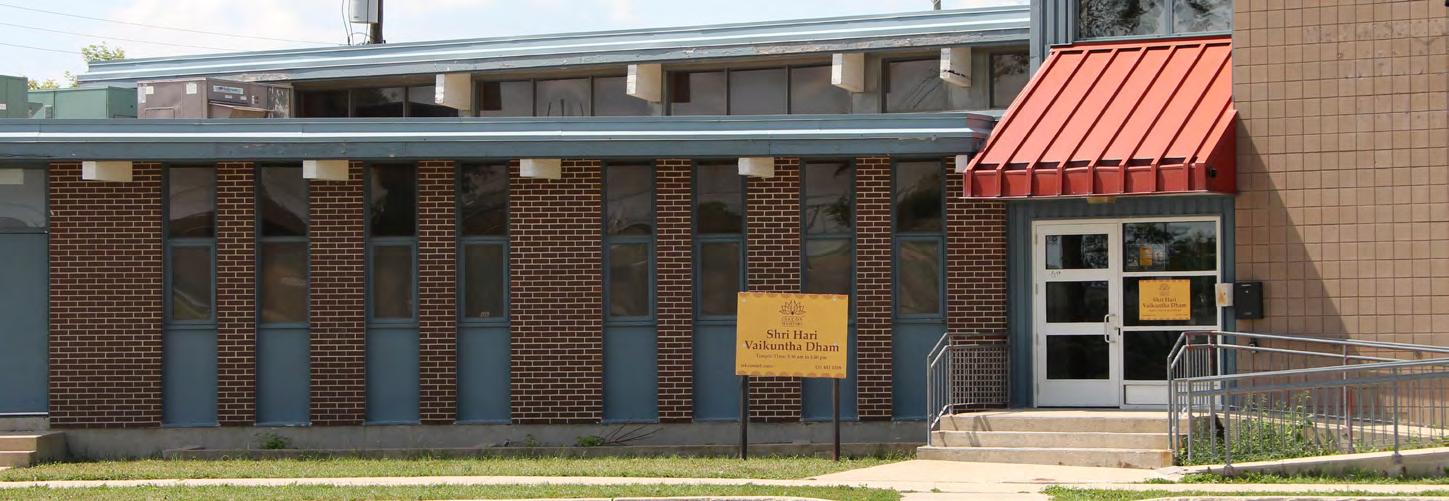
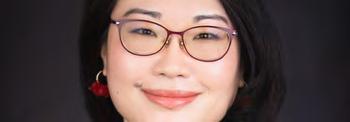
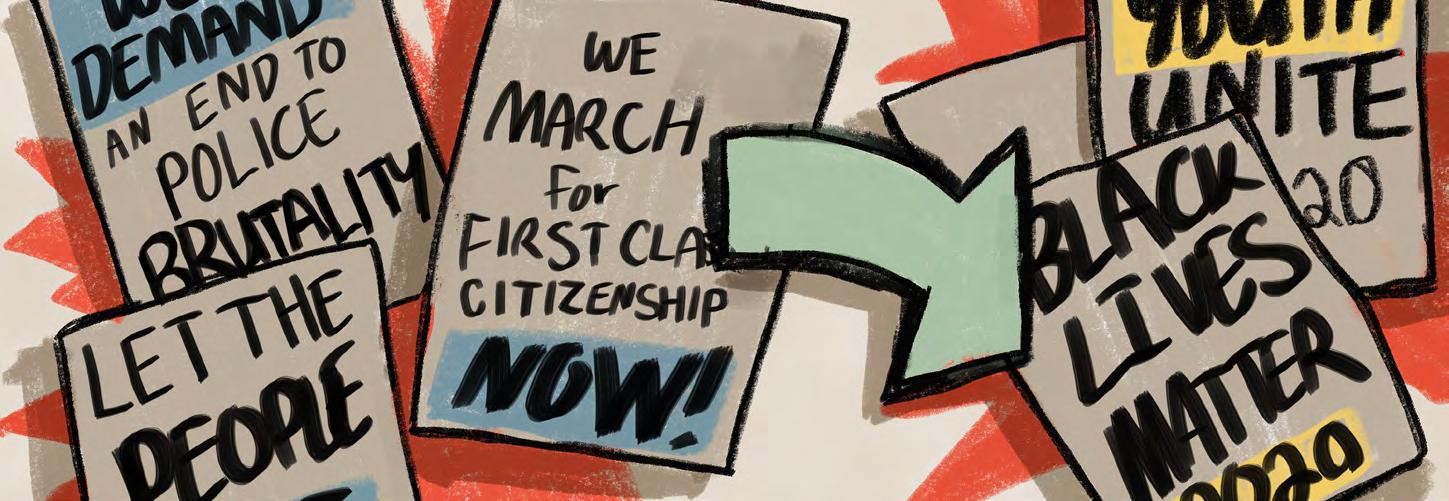

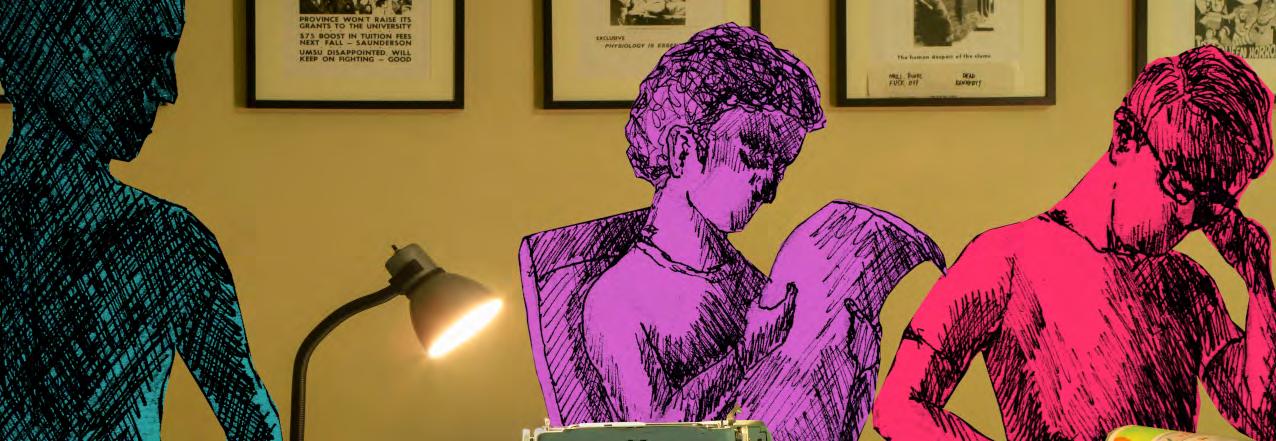
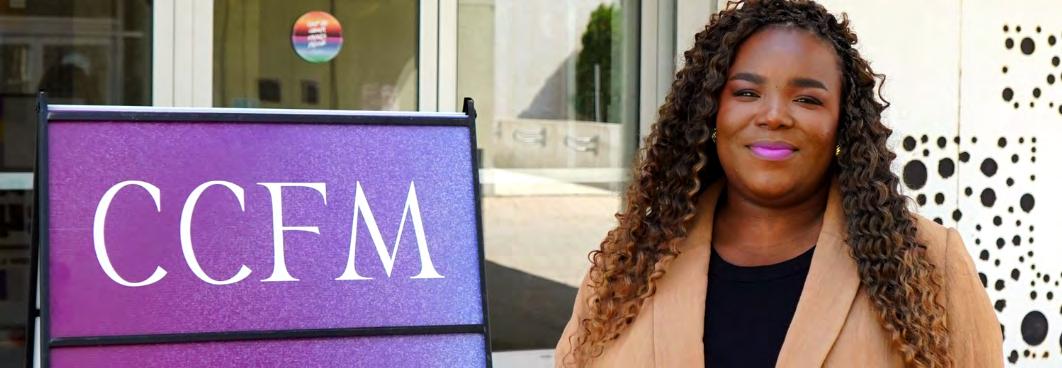
VOLUNTEERS
interested in volunteering? email me@themanitoban.com today!

Any individual who qualifies as a volunteer staff member must be voted in by a majority vote at a Manitoban editorial board meeting. Elected representatives and non-students may be excluded from holding votes as volunteer staff members in accordance with the Manitoban Constitution.
All contents are ©2025 and may not be reprinted without the express written permission of the Editor-in-Chief.

Community members reflect on past and present of Christ the King Chapel
Vital Parish — which will hopefully serve to meet the needs of students as they continue to celebrate Sunday mass,” Fr. Filips noted.
Looking ahead to the next academic year, he shared that the chapel’s mass service will reopen with a special celebration. “We have a new archbishop [who] is going to be installed officially as our new chancellor,” Fr. Filips said.
Desiree Nwokoro, campus ministry assistant, highlighted how student engagement in campus ministry has grown steadily. “This semes-
ter, the engagement has really improved, especially since COVID,” she said.
For Nwokoro, one of the most memorable parts of the year was the multicultural mass series. The chapel held services representing African, Southeast Asian, Hispanic and South Asian cultures. She described the series as “amazing,” with a significant increase in student turnout, which she believes is key to building “a more unified com-
munity here at the college.”
Looking to the future, Nwokoro shared plans to launch more programs designed to enhance Catholic students’ spiritual and social experience on campus.
time I come here it feels like home.” She noted her commitment to contributing even more in the coming year.
“Even Jesus would go off on a mountain by himself [...] He needed to recharge himself.”
— Fr. Mark Filips, priest chaplain, St. Paul’s College
Student volunteer Francisca Ehileme also reflected on her involvement at St. Paul’s College. “It has been very comforting [...] Every
Ehileme was recently honoured with the Community Service Award at the St. Paul’s Baccalaureate Ceremony for her dedication to Christ the King Chapel and the college at large. She encouraged her peers to join the college community, saying they “would not regret it.”
As the academic year wrapped up, Fr. Filips
reminded students to rest and recharge. “Even Jesus would go off on a mountain by himself [...] He needed to recharge himself,” he said.
The final mass concluded with a picnic at King’s Park, a gathering that allowed Catholic students, staff and faculty to share one last moment of fellowship before the campus quiets for the summer.
Mass services at Christ the King Chapel will resume Sunday, Aug. 31, for the upcoming academic year.
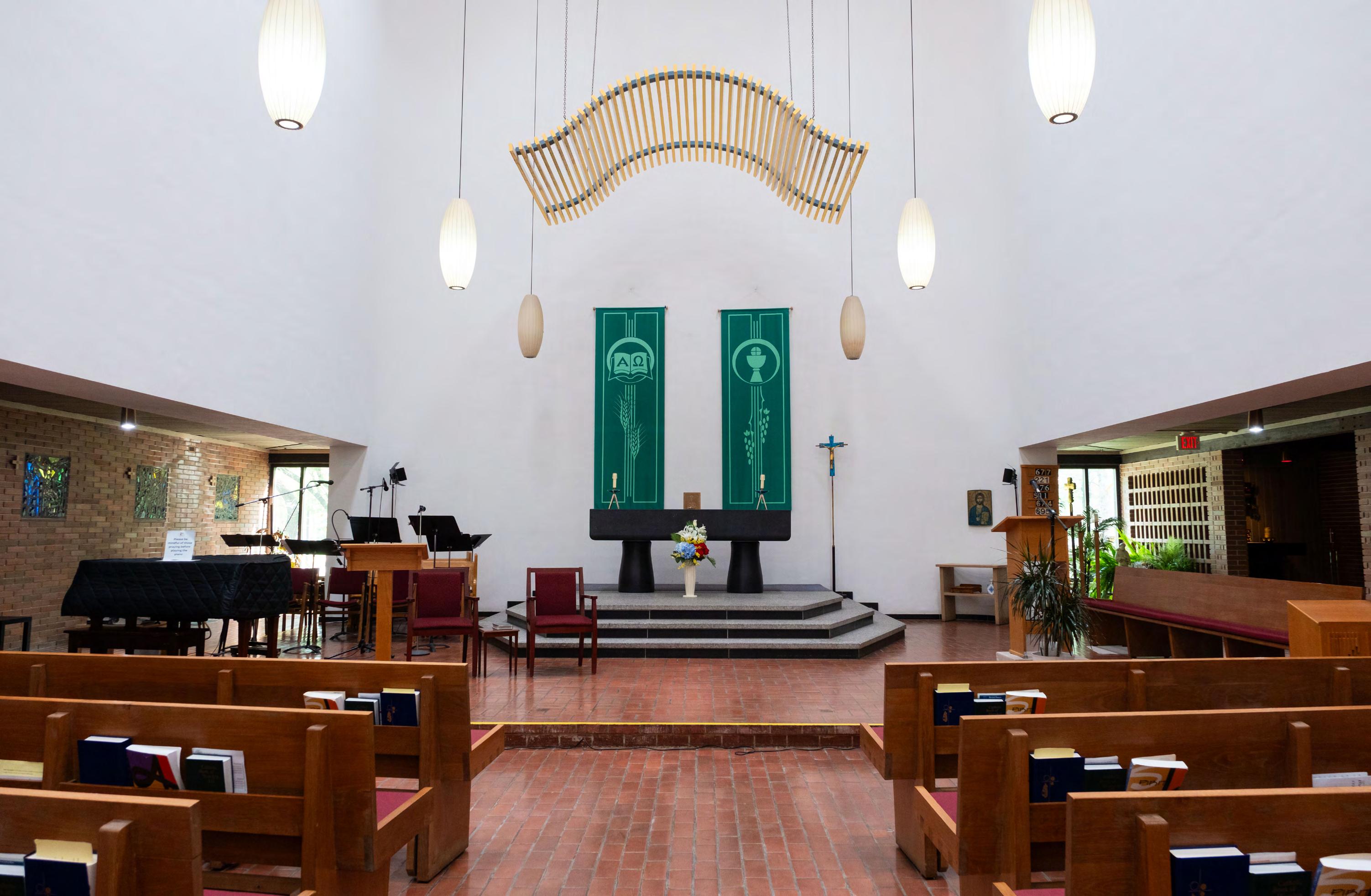

PHOTO BY MIKE THIESSEN / STAFF
< Cont’d from front page
U of M professor among world’s top scientists
Dilantha Fernando recognized by Stanford for his global research impact
Roy Albright Obah, staff
D ilantha Fernando, a professor in the department of plant science at U of M, has been ranked among the world’s top two per cent of scientists by Stanford University, a recognition reserved for researchers whose contributions have demonstrated exceptional impact and consistency.
Stanford University’s annual ranking highlights the top echelon of scientists globally. This distinction is based on an assessment of bibliometric data, evaluating factors such as the h-index, total number of citations, and co-authorship-adjusted metrics. Only scientists ranking in the top two per cent of their subfields — across 22 broad disciplines and 176 specialized areas — are included. Fernando acknowledged that this is “a very prestigious thing to receive.”
The achievement is owed not only to individual scholarship but also collective effort. Fernando attributed much of his success to the works of his graduate students and postdoctoral researchers. As a seasoned educator and research leader, Fernando emphasized the importance of setting a standard for research excellence. “I give the direction, the vision, and get the research proposals that get funding to do research that is meaningful for Canadians and the world,” he stated.

sonal fulfilment. “It’s more than an award,” Fernando reflected. “I think it is the prestige that I bring to the university and to the community of
ens a scientist’s credibility and influence across academic, policy and industry landscapes. It often opens new doors for interdisciplinary collaboration.
“The University of Manitoba has been a wonderful place for me to conduct my research.”
— Dilantha Fernando, professor in the U of M’s department of plant science
In explaining how inclusion in the list is calculated, Fernando said, “I will be in that category of two per cent ranked scientists around the world permanently.” The distinction reflects a five-year period of significant contribution and impact in his research area.
His pride in this achievement extends beyond per-
scientists in the University of Manitoba.” He added that the university “has been a wonderful place for me to conduct my research.”
This recognition matters deeply in both academic and practical terms. Being listed among the top two per cent of scientists globally strength-

Fernando’s research focuses primarily on agricultural sustainability, with notable breakthroughs that extend beyond academia. One of his proudest accomplishments is his work on canola disease mitigation. He helped reverse an agricultural trade setback with China by addressing blackleg disease in canola, a condition that could have cost Canada approximately
$3 billion annually. His strategic intervention not only protected Canadian exports but also elevated the U of M’s international research profile.
“Most of my research is related to sustainability,” he explained, emphasizing his commitment to long-term, solution-driven science.
This honour is especially noteworthy given his balancing of roles in both academic and administrative leadership. “As a dean I have administrative work, but along with it I have been able to maintain a very vibrant research program in the faculty of agriculture and food sciences and achieve this ranking.”
Alongside these responsibilities, Fernando is grounded by his family,
whom he regarded as integral to his journey. “Family is very important for me. I do almost everything with my family, and they are very supportive,” he said.
Dilantha Fernando is also the dean of St. Paul’s College and the founding editor-in-chief of Plants, an international journal, and the first non-British editorin-chief of the British Society for Plant Pathology’s journal. He is a fellow of the American Phytopathological Society and past president of the Canadian Phytopathological Society, currently serving as editor for six international journals, shaping global research in plant science.
PHOTO PROVIDED BY DR. DILANTHA FERNANDO
SEPTEMBER 3
BISONS ON THE QUAD
11AM - 2PM


Presenting Sponsor

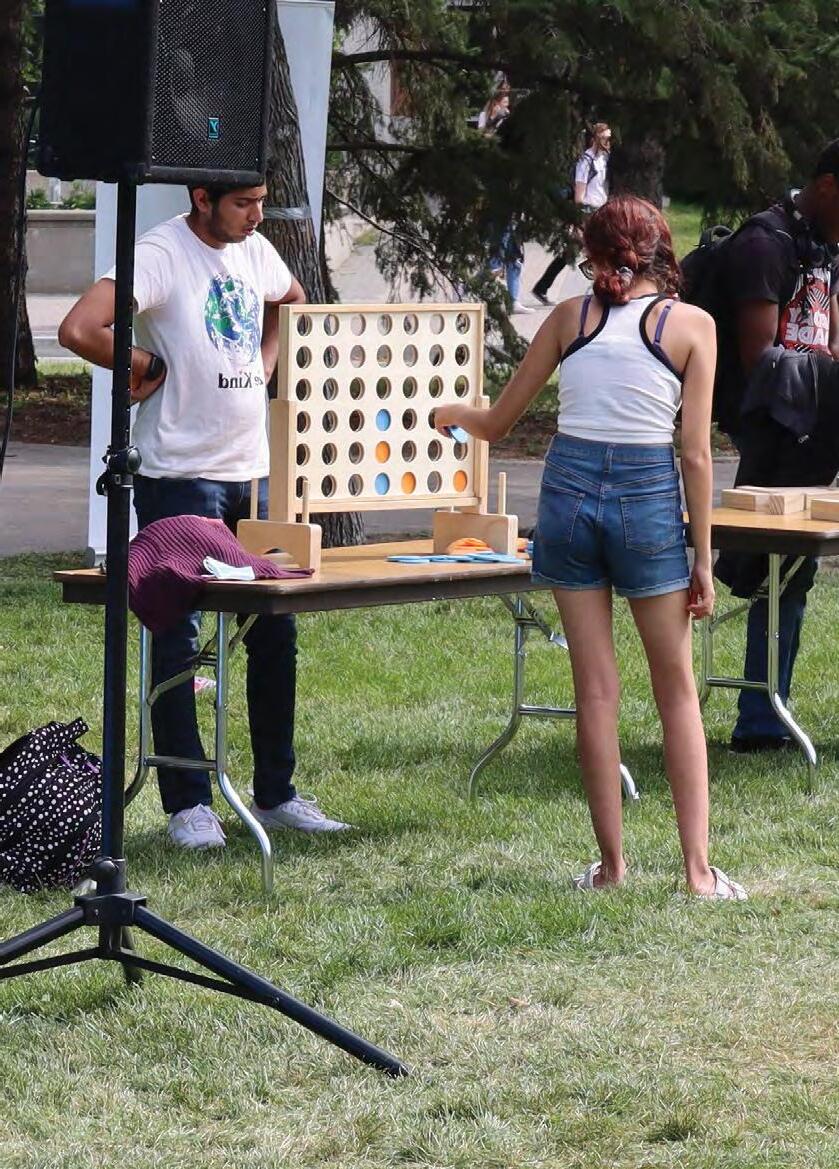

New Krishna temple welcomes all
Weston Krishna temple brings faith and joy
Jesse Brogan, staff
I
n Winnipeg’s Weston neighbourhood, a former community church has transformed into the city’s first Krishna temple, a place its leaders hope will become a spiritual anchor and educational space for people of all backgrounds.
“The temple is envisioned not merely as a place of worship, but as a spiritual wellness centre,” said Sanatana Dharma Das, spiritual director of ISKCON Winnipeg. “Anyone, from any background, can discover inner peace, community and purpose.”
The new temple is part of the International Society for Krishna Consciousness (ISKCON), a global movement rooted in Hindu philosophy and devotional practice. The space is open to everyone, whether they are practicing Hindus, spiritually curious students, or simply people seeking calm.
Beyond daily worship, the temple offers a full slate of programs focused on spiritual education and experience. Mantra meditation, philosophy classes, guided discussions and weekly kirtan (devotional music) are a few of the experiences offered.
“Our motto is, ‘Come as you are; experience the joy of spiritual connection,’” said Das.
The temple’s event calendar is vibrant and busy with a year-round celebration of culture and consciousness. Major festivals include Janmastami (the birth of Lord Krishna), the Chariot Festival (also known as Ratha Yatra, featuring music and dance), and the Festival of Colours (Holi), known for joyful splashes of colour and community unity that symbolizes letting go of grudges.
These “festivals are the heartbeat of our community,”
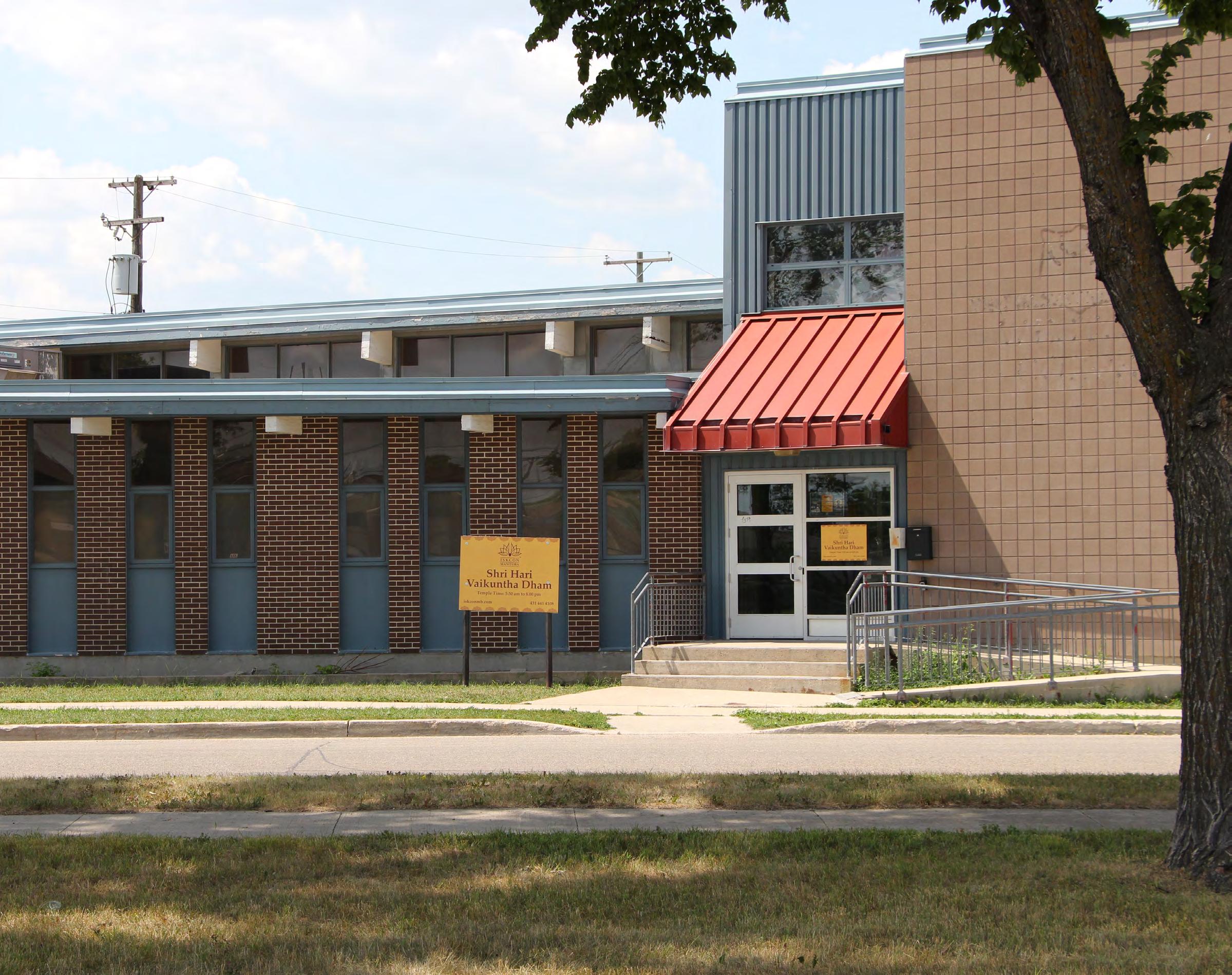
said Das. “They celebrate divine love, cultural richness and shared joy.”
Education is a major focus, especially for youth. The temple plans to offer value-based programs for children, mentorship and life coaching, spiritual retreats and workshops that connect teachings from the Bhagavad gītā to modern challenges like stress, identity and relationships.
“Many young people, whether of Indian origin or from other cultures, crave depth and community,” said Das.
ISKCON Winnipeg hopes
events promoting peace and community meals.
“The temple aspires to be a spiritual lighthouse — not a silo,” said Das.
“The temple is envisioned not merely as a place of worship, but as a spiritual wellness centre.”
Krishna consciousness is ultimately about serving all beings, not just one community.
— Sanatana Dharma Das, ISKCON spiritual director
to collaborate with other religious and cultural groups in the city through food drives,
Inclusivity is a guiding principle.
Non-Hindus, skeptics and spiritual newcomers are welcome to attend any of the tem-
ple’s events.
“A Christian can learn mantra meditation. A newcomer can feel calm through music and philosophy,” said Das.
Underlying everything is a belief in universal truths. Compassion, service and the idea that all spiritual paths can lead to the divine.
The temple opens Aug. 16, 2025, for weekly gatherings and public events. With its doors wide open, it aims to serve not just a faith group, but the entire city.
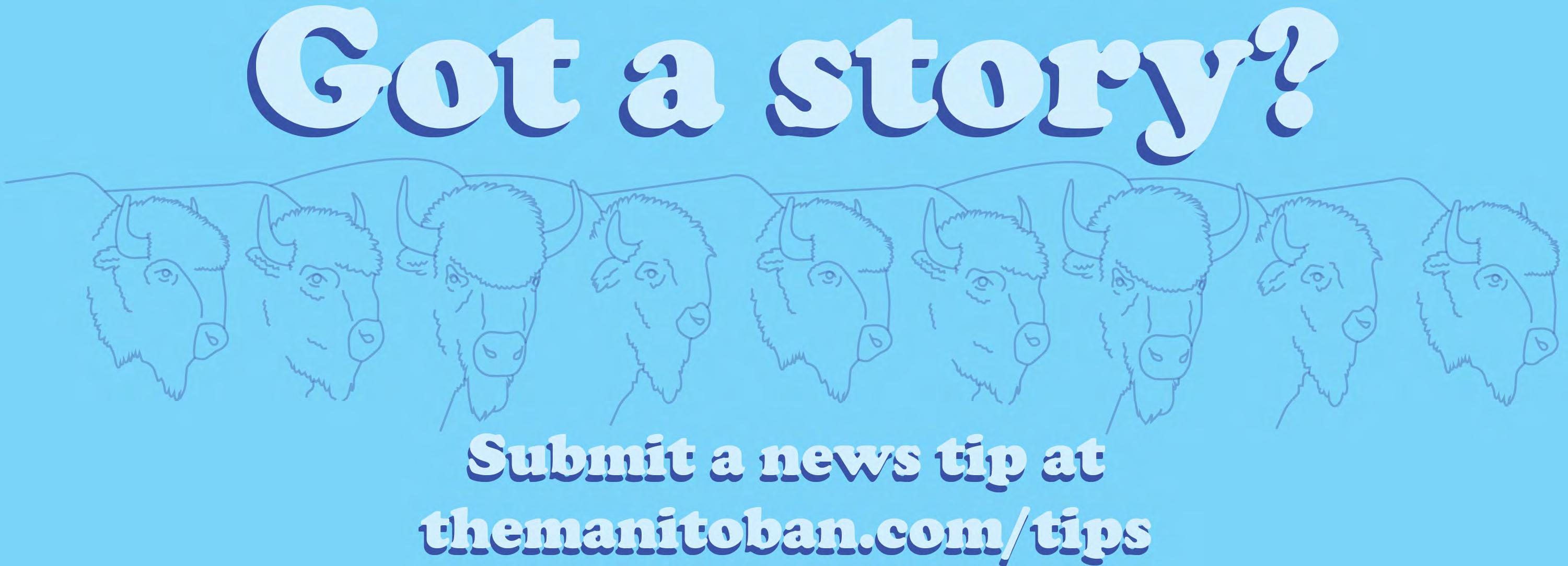
PHOTO BY JESSE BROGAN / STAFF
Redefining belonging and community
U of M researcher examines gap between cultural perceptions and lived experiences
Mansura Akter Meghla, staff
“R esearch is meant to open doors to inquiry, not shut them—or particular individuals who supposedly do not belong—out,” said literary scholar Nancy Kang. Currently, she is an associate professor in the U of M’s women’s and gender studies program, Canada Research Chair in Transnational Feminisms and Gender-Based Violence, and acting director of the U of M’s Centre for Creative Writing and Oral Culture.
This philosophy of openness underpins Kang’s recent work that critically examines the consequences of racial homogenization within the U.S., particularly concerning Latinx communities (those of Latin American ancestry).
Kang specializes in ethnic North American literature, primarily of the twentieth and twenty-first centuries. At its core, Kang’s work is about breaking silences— whether historical, political, or personal, and creating room for stories that have long been pushed to the margins. “I want to ensure historical silencing, neglect and diminishment of marginalized populations do not continue without awareness, examination and contestation,” she said.
“I want
ican English language professor Silvio Torres-Saillant that interrogate broad narratives of racial and ethnic belonging. A central focus of the book includes “the difficulties involved in defining a ‘Latinx community,’” given its internal diversity across over 65 million people.
Kang noted Latinx identity is not a singular experience but rather shaped by national origin, culture, language and legal status—variables often erased in mainstream representations.
“In terms of the homogenization of Latinx peoples […] In the U.S., it is precarious at this time to equate everyone who seems to fall into that identity category as the same in terms of legitimacy, citizenship, political orientation and civic belonging,” she explained. “More simply, clumping everyone together as a ‘community’ erases key differences, whether based on national origins, immigration status, ethnicity, culture and language use (among others).”
The essays also address the limitations of racial categoriz-
course to simplify complexity through “homogenizing and ‘easy’ labelling of mixedrace peoples.” Her research includes the impact of such simplifications, from media portrayals to community frictions among groups like Puerto Ricans, Dominicans, Central Americans and Chicanx/Mexican Americans.
Kang warned of the dangers in forming “huge conceptual communities” like “the Latino community, the Asian community, the Black community” through uncritical media discourse. “Too often, I feel, there is potential for abuse of the ‘shared view.’ Solidarity and political strategy-building are certainly factors to keep in mind, but members of a given community do not exist there without eventually asserting their differences,” she explained.
Drawing a parallel with Asian American history, Kang noted how “it was assumed during the early era that started with the quest for Gold Mountain that Chinese immigrants would [...] eventually return to the Old Country and not make the U.S. or Canada their home.”
to ensure historical silencing, neglect and diminishment of marginalized populations do not continue without awareness, examination and contestation.”
— Nancy Kang, associate professor in the U of M’s women’s and gender studies program
She is co-editing a new book with Michael Nieto Garcia, an assistant professor of literature at Clarkson University. The book, Problematic Paradigms and the Contours of US Latinidad, brings together essays by Dominican-Amer-
ation in the U.S., particularly given the historical mixing of cultures and ethnicities in Latin America.
Highlighting the marginalization of Afro-Latinx individuals, Kang pointed to the tendency of U.S. racial dis-
This assumption made it easier, she argued, “for those who wanted them driven out to commit acts of […] racial violence against them.”
This complexity intensifies for individuals navigating mixed identities. “Those who are part of multiple communities (say Black and Latinx peoples) need to negotiate the demands from multiple
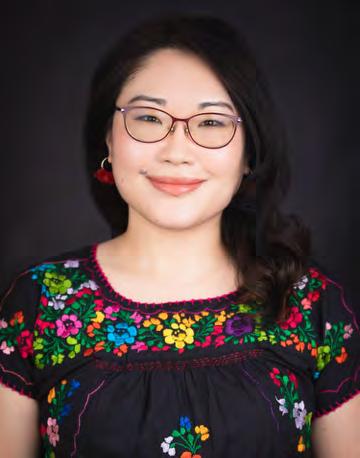
fronts,” Kang observed.
“Torres-Saillant mentioned, for instance, being asked by an African American colleague back in the 1990s while serving in the English department of a satellite campus of the City University of New York, whether he felt more Hispanic or more Black […] How does a person of mixed ancestry ask—or answer—such a loaded, complex question in a satisfying and simple way?”
Kang’s other ongoing project explores patterns of ostracism faced by spiritual women, focusing on Latinas historically identified as ‘brujas’ (witches) and African American enslaved women
known as conjurers, within highly dogmatic religious communities.
Findings from this project challenge contemporary feminist assumptions about community as being inherently nurturing. Rather than providing safety, increased community involvement often resulted in greater vulnerability to harm.
Kang encouraged researchers, especially students, to resist binaries, boxes and the pressures of “pigeon-holing.” She urged them instead to embrace collaborative research amid risks and insecurities.

PHOTO PROVIDED BY ARJUN MALIK
When the paper is due and the world is burning
Reflecting on the shape-shifting nature of hate and bigotry
Peace Ifeanyi, staff
Doing research several centuries after the slave trade, it appears as though hate and bigotry may be everlasting topics. This is not to say signs of hate or bigotry did not exist before that era. Humanity has always found ways to ‘other’ one another, but the transatlantic slave trade crystallized racial hate and ethnic bigotry into systemic, exportable institutions. It is as if, from that period onward, hate found new machinery.
I begin with the slave trade era because it seems to me that it casts the longest shadow. Like a scarf or veil that refuses to be lifted, its imprint is still felt even in our age of progress, technology and policy reform. It is felt in these two concepts of hate and bigotry.
Between the 16th and 19th centuries, an estimated 12.5 million Africans were forcibly taken across the Atlantic. We need not dive into details today, however this ‘mass racial project’ constructed Blackness as less than human, to justify economic exploitation. Over time, laws, pseudoscience and religion were weaponized to validate this hierarchy.
This project did not just rob people of freedom, it birthed a way of thinking. It institutionalized the idea that difference may equal danger, and that some people deserve fewer rights than others because of their appearance or origin.
This logic—that one’s racial or ethnic identity justifies social control—is mirrored in colonization, apartheid and policing.
While the slave trade eventually ended, the ideology it produced did not. Its remains show up in racial profiling, hate crimes, over-policing, strip searches, immigration exclusions and bigotry in all its forms.
However, if you are new to the block, let me introduce you to these hydraheaded serpents. Hate in legal terms is often referred to as hate crimes. According to the Toronto Police Service, “A hate crime is a criminal offence committed against a person or property motivated in whole or in part by the offender’s (real or perceived) bias, prejudice or hate against an identifiable group.”
Bigotry, on the other hand, is less codified in law and therefore less likely to appear in court. However, it is still likely to appear everywhere else. It depicts intolerance toward those who are different, rooted in beliefs about a
group based solely on their perceived membership in that group.
Although the world has made significant progress and witnessed increasing tolerance among humans, these sibling concepts do not die — they transform, they evolve.
Apartheid, for instance, ended in 1994, but economic inequality and state violence remain deeply racialized in South Africa. In France, post-colonial immigration laws have disproportionately targeted North Africans and ‘laïcité’ (secularism) is weaponized against Muslim communities, especially Muslim women. In Australia, the historical removal of Aboriginal children (the Stolen Generations) has morphed into
their overrepresentation in child welfare and incarceration systems. In Canada, residential schools may be ‘historical,’ but today, Indigenous people are over 10 times more likely to be incarcerated.
ened. Bigotry does not shout. It moves quietly, speaks in legalese and in polite deflections.
“We keep researching and writing. Not because we believe the next journal article will end racism, but because we believe in slowing it down, exposing it faster and equipping people to recognize its disguise.”
Anti-Black racism found new language in segregation, redlining, underfunded schools and laws that seemed neutral but were not. We also saw the rise of civil rights, only to watch mass incarceration take root. We preached diversity in boardrooms, while prisons filled with Black and Indigenous bodies. We introduced anti-racism trainings, but deportation policies hard-
These are not isolated cases — they reflect a pattern. As a student who researches these phenomena, this is one of the hardest truths to hold. You want your research to matter, your paper, thesis, conference presentation to spark change—or at least contribute to it — but sometimes it feels like you are chasing a shadow. By the time you write about one problem, the system has already found another backdoor.
For instance, you read about the reforms made to ‘solitary confinement’ in Canada, prompted in part by concerns over its operation and
the overrepresentation of certain groups. At first glance, it looks like progress, but when you dig deeper you find that Black and Indigenous people are still overrepresented. The name has changed, but the effect has not.
It is like trying to put out a fire, only to realize the blaze has already spread somewhere else.
And yet, we keep researching and writing. Not because we believe the next journal article will end racism, but because we believe in slowing it down, exposing it faster and equipping people to recognize its disguise. If hate is going to keep mutating, we need to stay nimble. We need to notice the pattern, name it and teach others to do the same.
So yes, the paper is still due and the world still burns. We will keep writing, because just maybe we will help someone else see the smoke sooner.
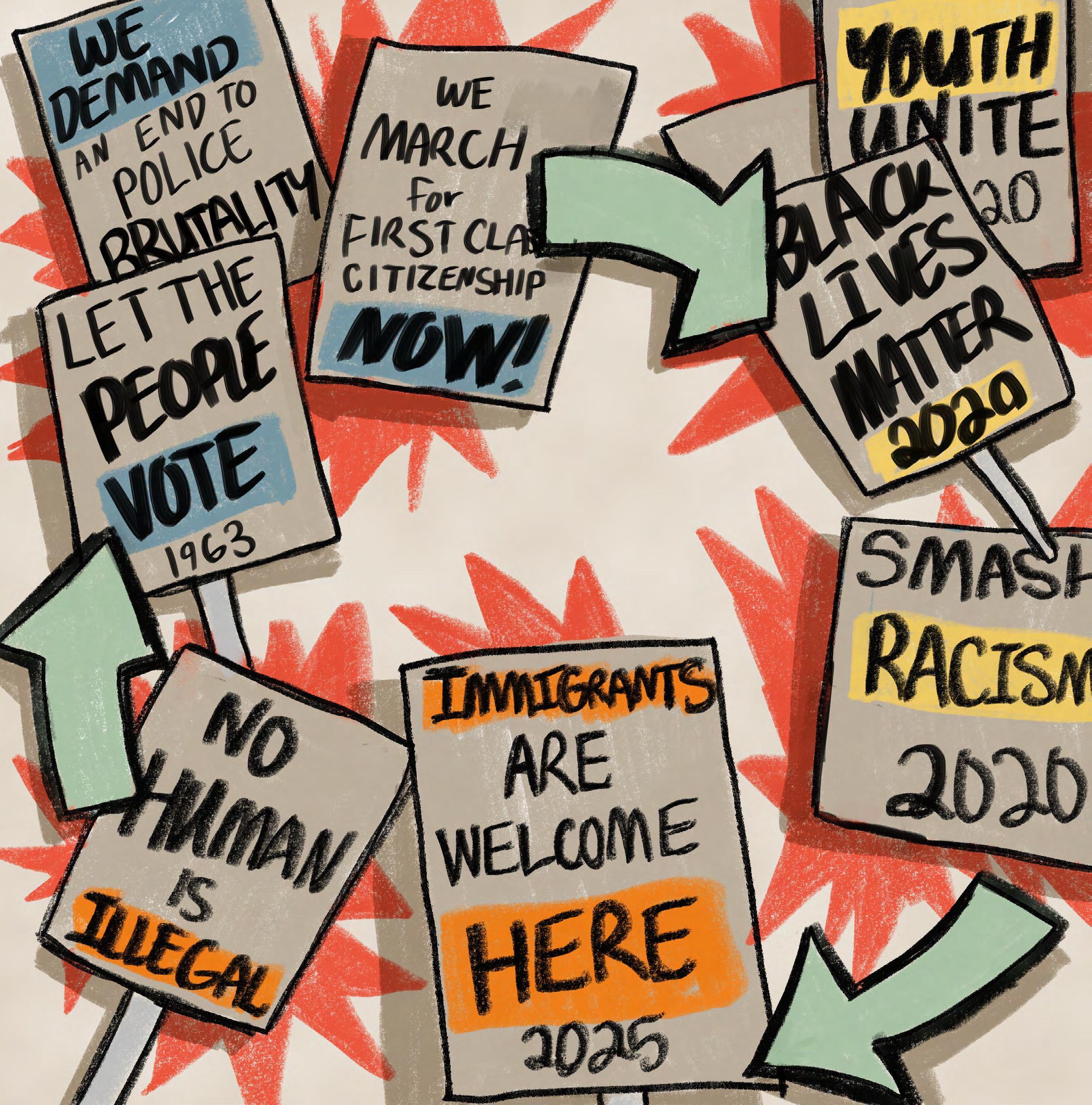
GRAPHIC BY EMMA GILLICH / STAFF
Is Folk Fest really about music anymore?
Live music experience or photo op?
Quinn Mayhew, staff
The Winnipeg Folk Festival, although seen by many as the pinnacle of Winnipeg music festivals, for me was a nightmare of sunburn, sadness and heatstroke.
Every year, I feel left out when it comes to Folk Fest enthusiasm. I feel like I just cannot relate to the excitement people have when talking about this festival from my nightmares.
The festival sounds great in theory — a long weekend of frolicking in fields, listening to folk music and seeing your friends. These all sound like activities I’d enjoy, but the festival’s reality is far from that.
Where people see the music festival of their dreams, I see hordes of drunk people wandering Birds Hill Park en
masse. Where others see a relaxing afternoon of sun tanning, I see myself being burnt to a crisp.
I cannot help feeling like I am missing the fundamental part of why people keep coming back every year.
I feel like Folk Fest is a community of people built on the premise of having a good time and being kind to one another, and yet I cannot help feeling like an outsider.
The few times I have been to Folk Fest, I always end up feeling miserable. I always feel like a giant outsider, like everyone’s part of this big comedy act that I’m just not understanding.
I feel like almost everyone my age takes the drive out to Birds Hill to listen to music they do not like. I hear
people almost every year saying just how much they hate the music lineup, but I still see them posting on the internet about how much they love Folk Fest.
In my opinion, this year’s lineup was closer to Folk Fest’s roots with performers such as Blue Moon Marquee, Peach Pit, Fred Penner and Kevin Morby. However, a lot of people seemed to dislike the lineup for this year.
Is Folk Fest’s culture really about new and emerging folk artists anymore if people no longer seem to be going for that music? My vendetta against Folk Fest perhaps stems from people going more for the ‘vibe’ more than the music.
While there is nothing fundamentally wrong with going
just because your friends are, I feel in my soul that Folk Fest should be more about the music and less about the Instagram pictures.
I am sure one of the big factors in why I tend to avoid Folk Fest is the people I have gone with in years prior. I think because I went with a group of people who were more interested in chugging beer than enjoying the music, I grew to immensely dislike the event itself, which, in all honesty, probably is not fair to Folk Fest at all.
The weekend is probably lovely with the right people, while the sun is shining with music playing softly in the background of your afternoon nap. However, I also feel like Folk Fest is perhaps not as lovely when you’re inhal-
ing smoke the entire weekend and half of Manitoba is burning down.
I think you need a certain attitude when approaching the long weekend of Folk Fest. You have to be okay with being dehydrated, sunburnt and maybe a little bit dusty. Although I could handle all those things, I do not want to have to pay money just to be sunburnt.
Ultimately, I believe Folk Fest is not for everybody. At its core, it is something beautiful and magical, but is often seen as an opportunity to post Instagram photos, rather than to discover and enjoy live music.
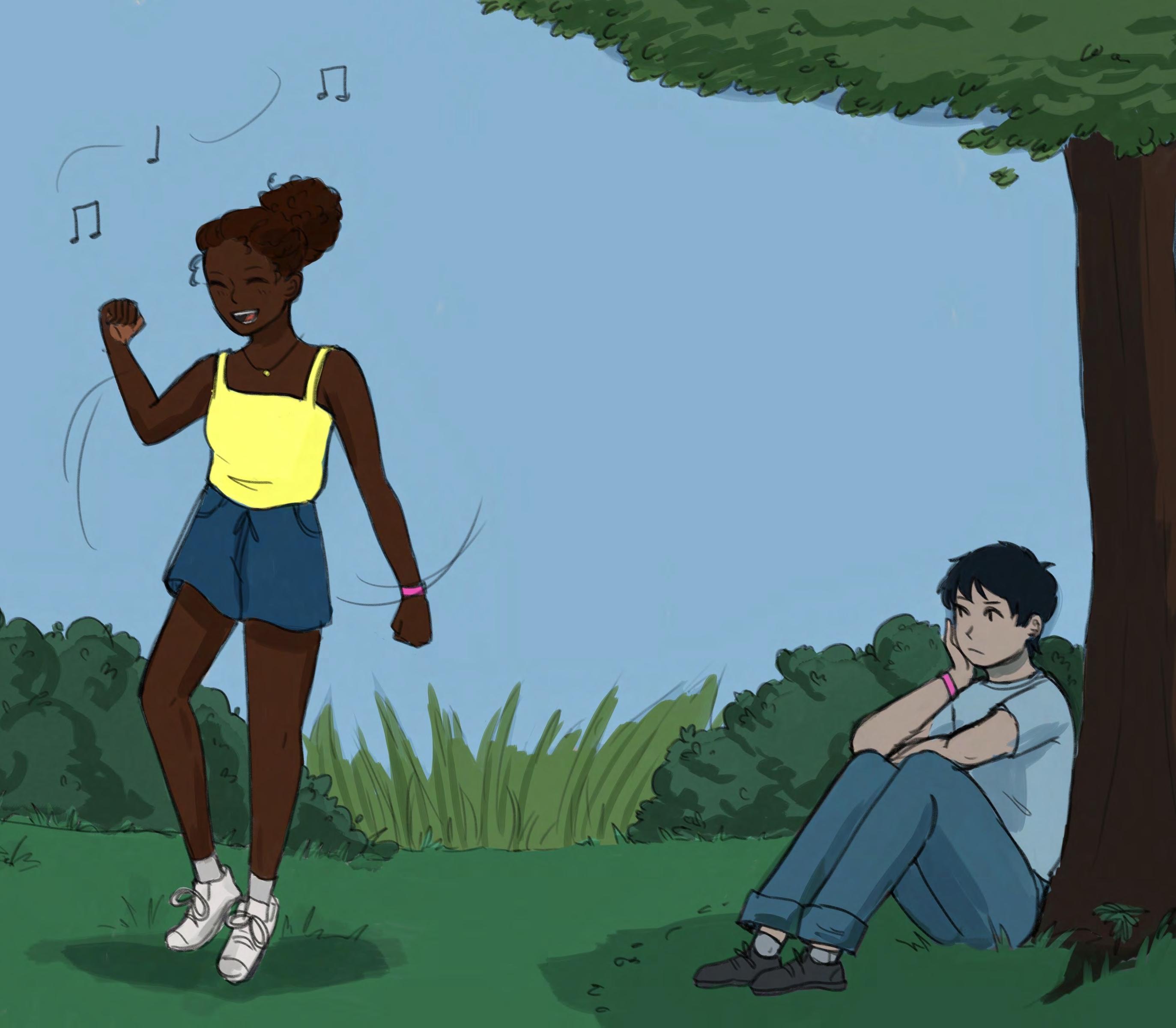
Diversions



To complete Sudoku, fill the board by entering numbers 1 to 9 such that each row, column, and 3x3 box contains every number uniquely. In Straights, like Sudoku, no single number 1 to 9 can repeat in any row or column. But rows and columns are divided by black squares into compartments. Each compartment must form a “straight.” A straight is a set of numbers with no gaps but it can be in any order, eg [7,6,9,8]. Clues in black cells remove that number as an option in that row and column, and are not part of any straight. Glance at the solution to see how “straights” are formed.



COLOUR
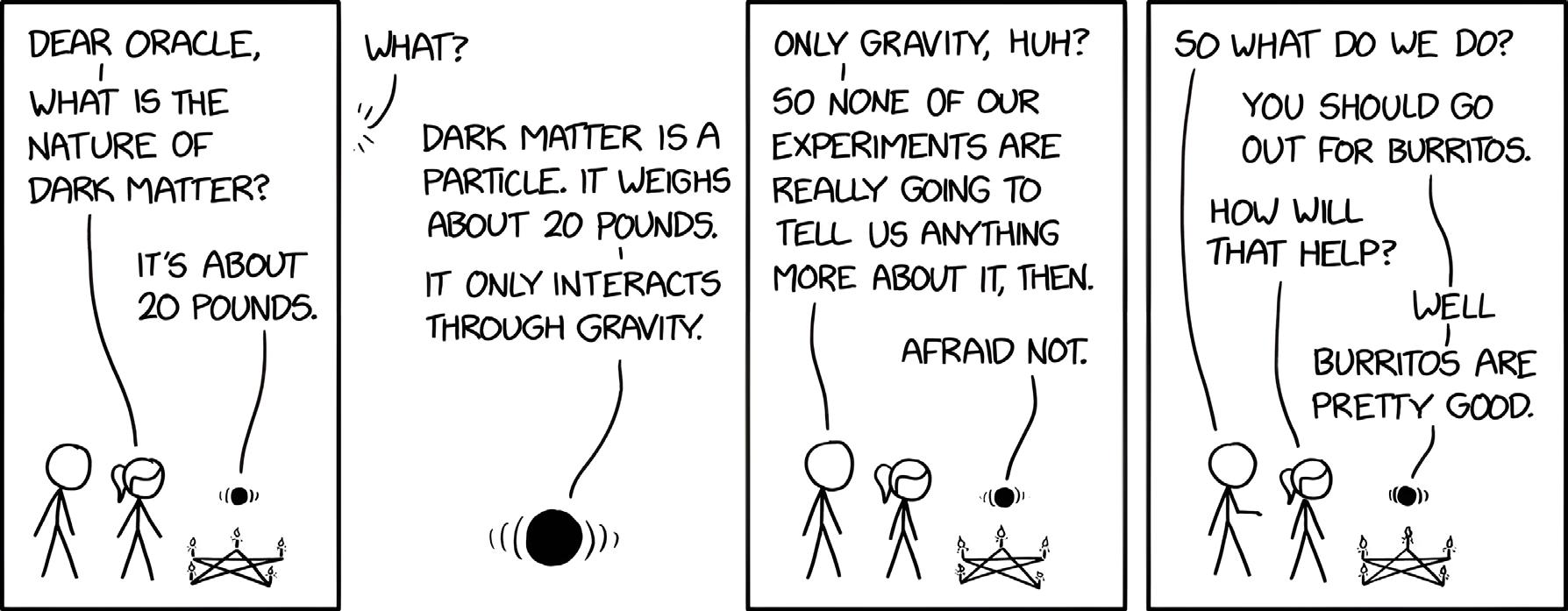

Straights Puzzle by Signdicated Puzzles
Puzzle by Signdicated Puzzles
Sudoku Sudoku Solution Straights Solution
ME!
Provided by Emma Gillich
Winnipeg producer CEC chosen for National Accelerator CEC amplifies call
Boris Tsun Hang Leung, staff
C
EC, a songwriter, producer and artist from Winnipeg, has recently been chosen to participate in the 2025 Women in the Studio National Accelerator. Hosted by Music Publishers Canada, the program provides women and non-binary producers from across Canada with training in technical skills, branding and financial literacy to promote equity in the music industry.
CEC was born and raised in Winnipeg but has lived around the world, including in the U.S. and Spain. They also lived in Ottawa where they played hockey and recently completed a master’s degree in music and culture before moving back to Winnipeg.
“I’ve been producing my own stuff for a long time, but I started producing music for other people in the last five years or so and taking that more seriously because I love creation,” they said.
CEC has also opened a new studio in the Exchange District with Lana Winterhalt, who was a participant in the accelerator in 2021.
According to CEC, the program includes zoom sessions where participants get to talk to professionals about different areas of the music industry. By the end of the month, the producers will take up a week-long residency in Toronto.
“That’ll be a lot more of an intensive, full days booked of workshops and panels and training and stuff like that [in Toronto]. And then networking and a lot more hands-on stuff because we get to be in person in the studio, and they provide a session with a photographer for headshots.”
“It’ll be really nice to also meet the rest of our group in person, so we can build those relationships and those professional relationships with other people across Canada,”
for gender diversity in the music production scene
said CEC.
CEC stressed that the program is unique not only in that it is tailored to music producers, but especially to producers who do not identify as men.
“It’s really hard to find producers, engineers, people that aren’t necessarily artists or songwriters, that aren’t men […] Especially now, as I’ve become more intentional in
who I’m collaborating with, it’s quite hard,” they said.
In addition, CEC said there are not enough engineers and producers that are women to cover every genre.
“It’s great when you have a couple [of women producers] that are really good, but let’s say they’re [in] rock or something like that, then it’s not really reflective of everybody. So it’s important to
train enough people [in] every genre or all kinds of experiences.”
“It’s really interesting and important that there are programs like this every year that happen, to specifically train women and non-binary people […] Every year, there’s a new cohort of six or seven professionally trained producers that come out of it,” they added.
Currently, CEC is working on a new single called “Enormous” with 10 to 15 collaborators, or the “Avengers” of the Winnipeg music scene as CEC called them. The track is to be released on Aug. 22.
Keep up with CEC’s work by following them on Instagram at cec.mp3 or by visiting cecmusic.ca.
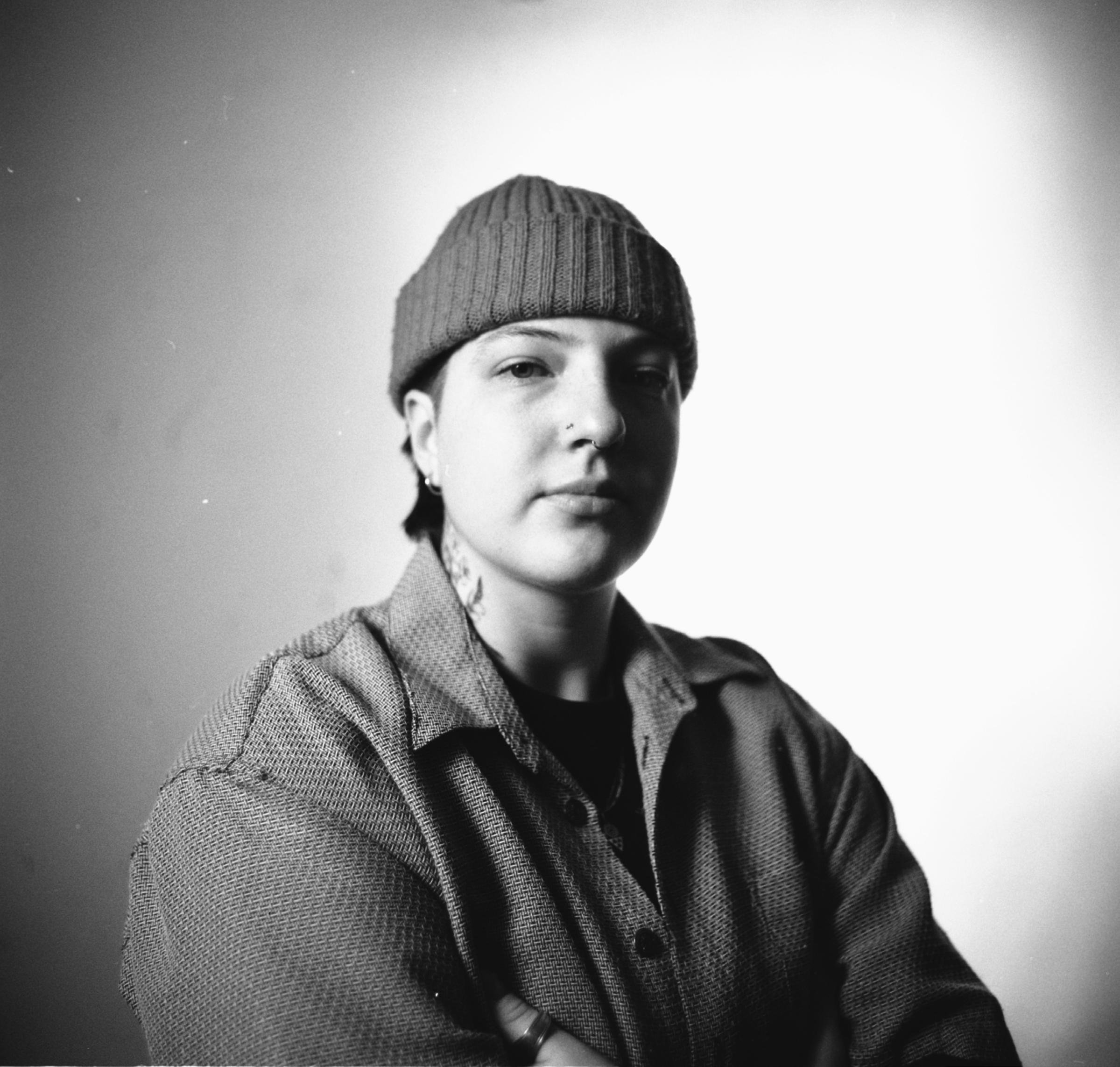

PHOTO PROVIDED BY MALCOLM JAY
CCFM names Patricia Bitu Tshikudi as new CEO
A chat with Tshikudi about francophone identity
Boris Tsun Hang Leung, staff
O
n July 8, the Centre culturel franco-manitobain announced the appointment of Patricia Bitu Tshikudi as its new CEO. As CEO, Tshikudi emphasized the importance of protecting francophone identity in Manitoba while celebrating diversity.
In an interview, Tshikudi shared her sense of accomplishment and responsibility in her new role.
“I’m feeling very proud, humble, and I also feel the weight of that in a good way […] I know how important an organization like the Centre culturel is for the French-speakers in Manitoba because we are not only St. Boniface-oriented, but we also [are] Winnipeg-oriented and Manitoba-oriented,” she said.
Tshikudi was born in the Democratic Republic of the Congo and moved to Montreal with her family at 11 years old. After graduating with a degree in journalism, she moved to Winnipeg in 2007 to work for La Liberté. She stayed in the city and eventually worked for Radio-Canada for 14 years.
Tshikudi said her background in French-language media helps her understand the character and challenges of the francophone community in Manitoba. For example, Franco-Manitobans are surrounded by English, making it difficult for some to hold onto their language.
“I have daughters, they are nine and ten, and we made the decision for them to only speak and do activities in French, just to protect that element of francophonie for them. And it only took one year of English classes and being in the [English-speaking] world for them to pick up English,” said Tshikudi.
“That’s one of the challenges that, as francophones, we have to face. We have to protect that element of unicity while being open and being just Manitoban as well.”
Alongside her commitment to preserving cultural identity, Tshikudi stressed the changing demographics of the francophonie in Manitoba and her goal of inclusivity in the community as CEO.
“Just in about 20 years, the face of the francophonie has changed so much with imports of people from Africa, from Europe, from North Africa,” she said. “Also, I have to mention all the francophiles […] Those Manitobans who go to immersion school and then get to learn French and embrace the French […] I really love that and I’m a big
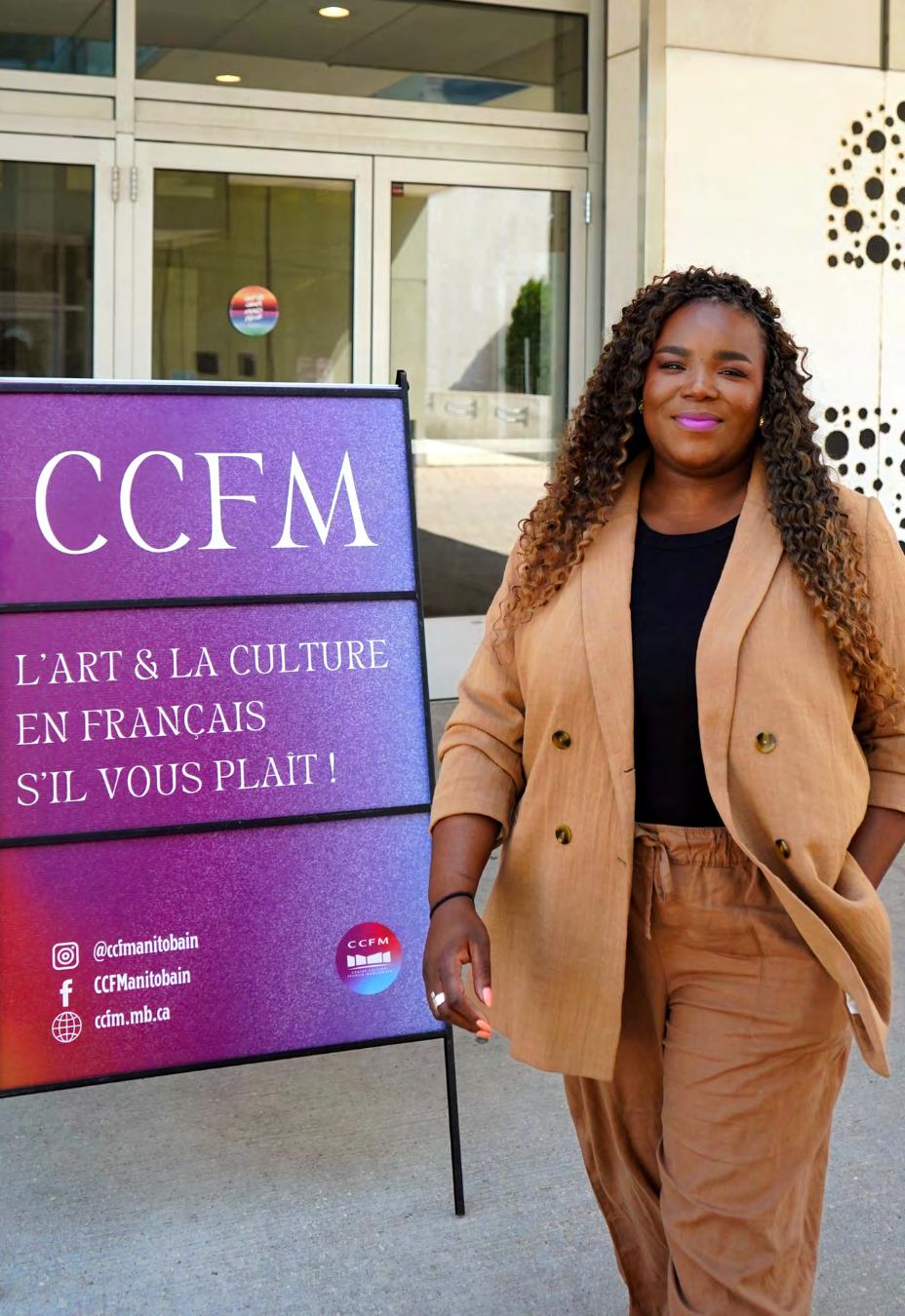
advocate for that.”
“This is all the French pool that we can tap [into], and give room for everybody to feel home when they come to the Centre culturel because that’s who we are now. We are francophones born here,
francophones coming here, and those who just learned the language and love it and embrace the culture.”
Tshikudi said the best way to promote the language is for people to attend French community events and have fun.
“We know how hard it is for the cultural organizations right now across the board around Canada to survive,” she said.
“And the only way we stay relevant and alive, is [by] putting out [programs] that
people enjoy and people showing up. That’s all it is. And then you create relationships, friendships and you learn a few French words as well. And that’s how we create a vibrant and beautiful community.”
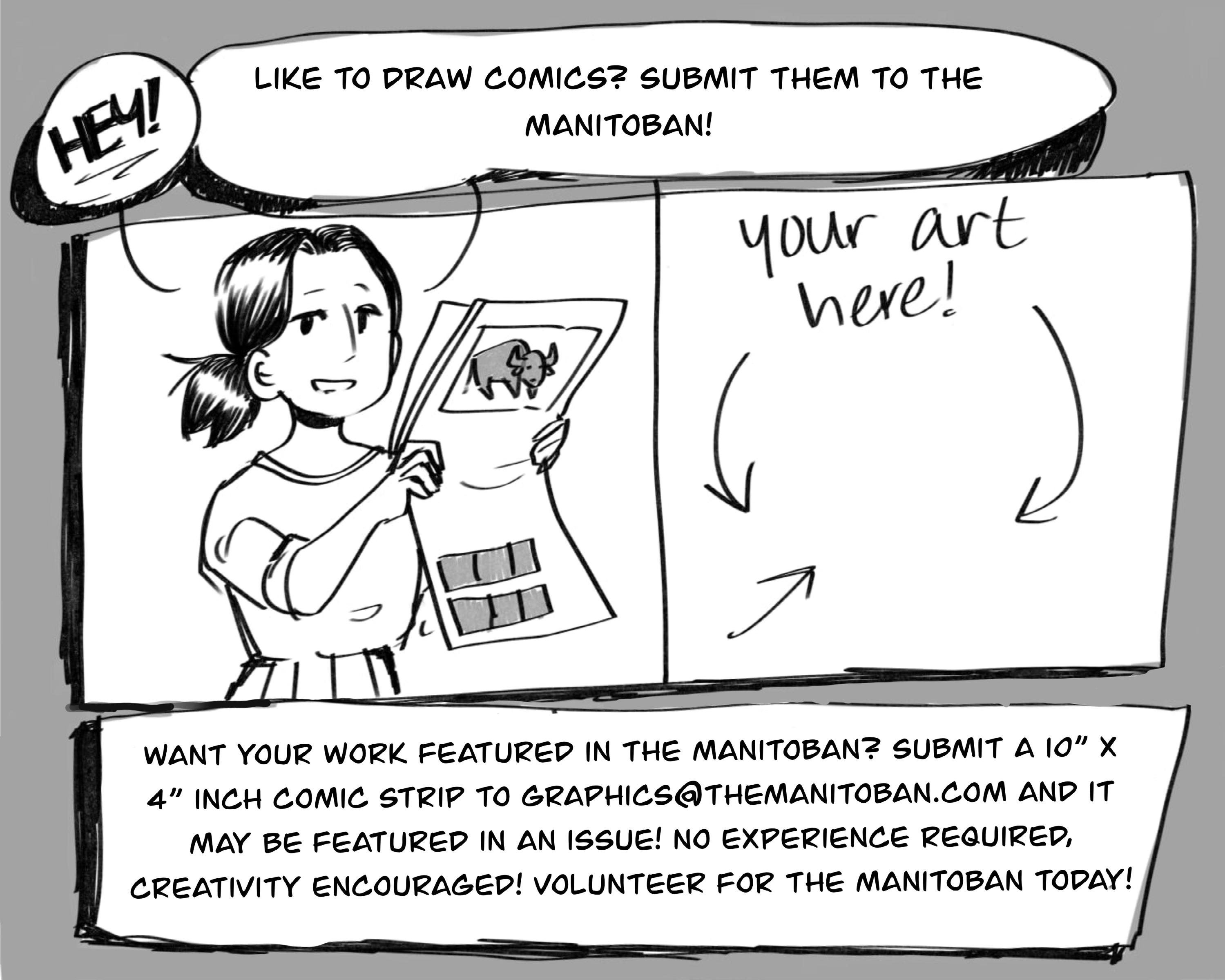

Valour FC lose 1-2 to Cavalry FC at home
Valour FC head coach Phillip Dos Santos finds positive angle amid loss
Abdul-Jalilu Ahmed, staff
Valour FC lost 1-2 to Cavalry FC in matchday 15 of the Canadian Premier League on Sunday, July 20, at the Princess Auto Stadium.
Both teams delivered strong performances from the outset, but both struggled to break the deadlock, sending the match into halftime tied at 0-0.
Cavalry FC opened the scoring in the 51st minute with a header from Callum Montgomery. In the 82nd minute, Valour FC midfielder Bruno Figueiredo received a pass in Cavalry’s half and rounded defenders to score the equalizer for his side. Sergio Camargo sealed the win for Cavalry FC in the 93rd minute, beating Valour FC goalkeeper Jonathan Viscosi to score the decisive goal.
Valour FC head coach Phillip Dos Santos recounted the circumstances that led to his side conceding the late goal.
“It’s what I call a freak football
play” said Dos Santos. “It’s a throw in, a loss of ball that you had already recovered, players already taking a position to try and go the other way, and then these things need to be managed. We need to see what went wrong.”
Dos Santos noted that the positives from the match will help drive future improvement for the players and the team. “Of course, we can’t take steps back. When there’s good that happens, we can’t take it. We have to cling to the progress. We have to hold on to the progress.”
approach, help them, help them in their career because there’s nobody in that locker room that starts a game wanting to lose. There’s nobody. So that’s my job.”
Valour FC goalkeeper Viscosi reflected on the players mood following the defeat. “It’s a real tough one,” said Viscosi. “We’ve been in a difficult time, and we kind of started to separate ourselves from the outcomes, recogniz-
especially, there was positives to take from it. We’re trying new things, small adjustments to try and solidify even more.”
He continued, “When something goes in our favour and it’s working well for us, something else creeps up and we need to address that. It’s just a continual process of addressing these small areas that we can do better and try and solidify those and piece them together.
“We have to cling to the progress. We have to hold on to the progress.”
— Phillip Dos Santos, Valour FC head coach
He added, “I’m with the guys. That, for me, [means] you have a choice as a coach. If you start caring more for the results than for the people that you have to work with every day, you’re going to lose their response. I’m there to help. I want to hold on to a positive
ing that we just need to focus on how we play and being solid and being together and just applying our game model the best that we can.”
Viscosi highlighted the lessons from past matches and how that can help the team, “The last three league games
Sports teams’ schedules
Gradually, like I said, we’re learning every lesson that a team can go through in a season. Of course, I do think that once we’re applying those and if we can stay committed to it and keep our heads throughout this process, that we will build on performances like this and turn good performances into results. Because at the moment, even though we’ve
had good performances, they haven’t been giving us the results that we want.”
Cavalry FC head coach, Tommy Wheeldon Jr., commented on key factors behind his team’s victory. “Absolutely, there is a great resilience in these lads, they refuse to lose,” said Wheeldon. “They were actually performing better second half. The goal went in and, credit to Valour, that was some finish from the lad. So the best way to win a game is just focus on the next play, and they did.”
In the Canadian Premier League standings, Valour FC sit in seventh place with eight points, while Cavalry FC holds third place with 25 points.
Valour FC will play Vancouver FC away on Friday, July 25, followed by a home game against Cavalry FC on Tuesday, July 29.

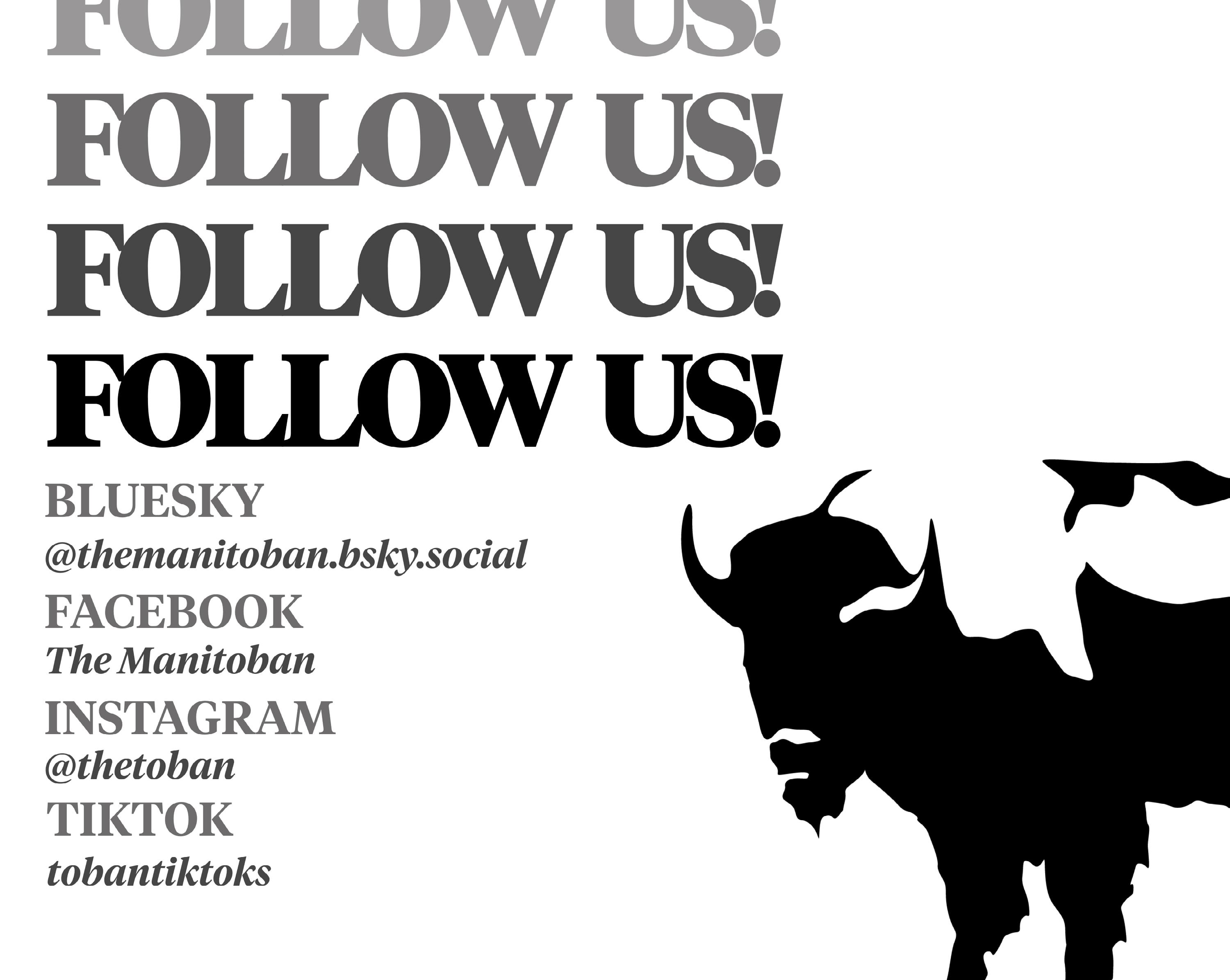
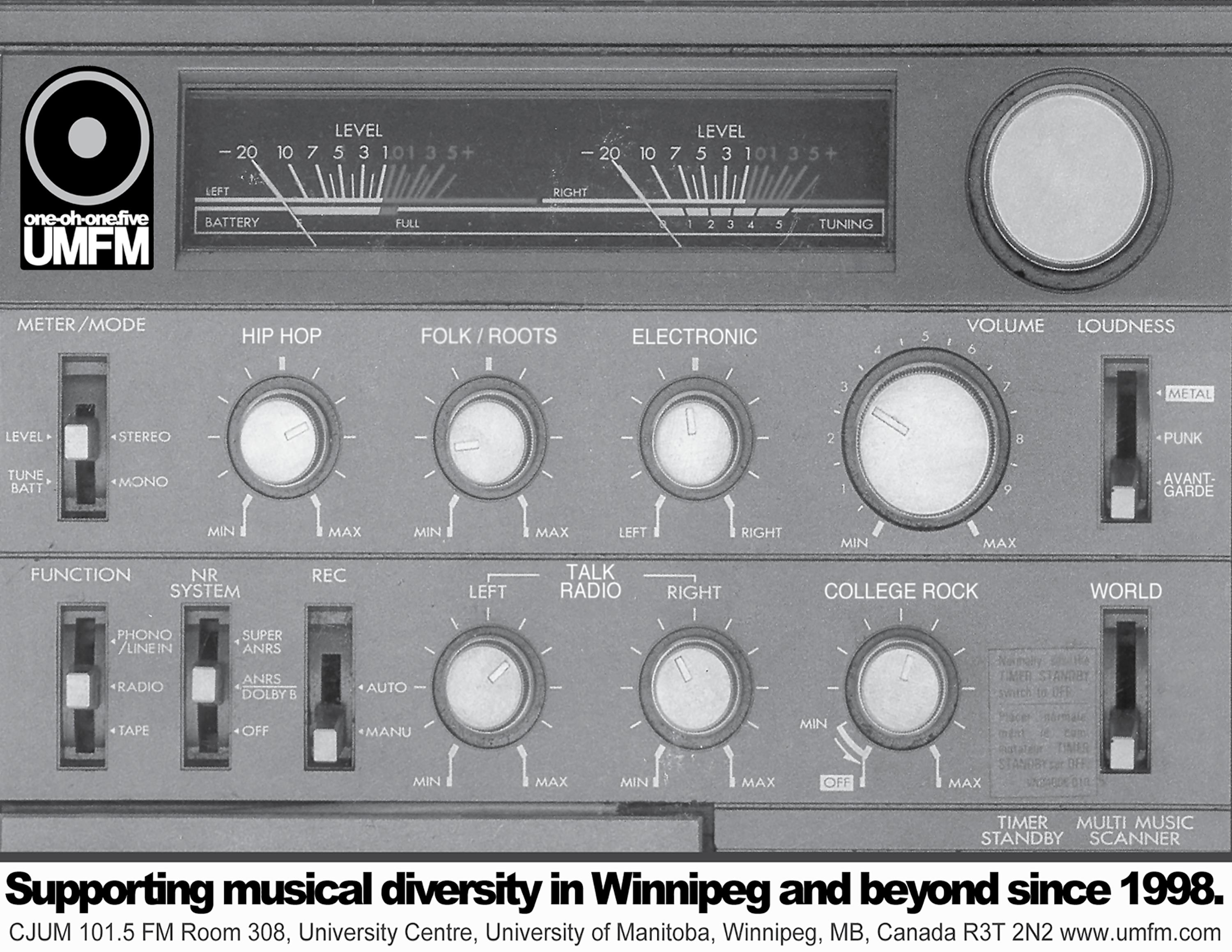
New coach Mark Colvin shares insights into his career
The Bisons women’s soccer coach outlines his ambitions, identity and style of play
Abdul-Jalilu Ahmed, staff
The new head coach of the Bisons women’s soccer team, Mark Colvin, has shared insights into his coaching career, his ambitions for the team and his vision for building strong identity and style of play in his first year.
“Like most other Canadians, I grew up playing so many different sports,” said Colvin, who is originally from Toronto. “Soccer was my big passion, but we always played all sports.” Colvin emphasized the role soccer has always played in his life, saying he “grew up playing competitive academy, and so it was very natural as an adult to get into coaching.”
Colvin said he had been coaching two women’s soccer programs in Sweden for the past three years. He also took courses in Scotland, obtaining his UEFA A license through the Scottish Football Association. He said that part of the benefit of getting his license in Scotland was making connections with coaches from around the world.
Colvin emphasized the value of “being able to connect, share ideas and different perspectives, because football [soccer] is played differently [and] viewed differently in different areas of the world.”
He explained his motivation to take on the Bisons coaching role. “I’m very familiar with university sport in the country, and U-Sports has always been a competition that I’m interested in, that I’m paying attention to and watching both on the men’s and the women’s sides.”
He continued, “the top players from across the country are competing against one another. And then I see myself as not just a coach, but I love the mentorship aspect of being a soccer coach [...] It’s about making an impact in the lives of the people that you’re working with. And so in university, working with student athletes that are, say, 18 to 22, I think that’s a really crucial final development stage of a young person.”
Colvin said when coaching in Europe, there was a quick turnover of players, and he was sometimes only working with a player for 10 months. He reinforced “being able to work with players 18 to 22 for four or five years, that’s the time that you can build trust, you can build relationships and really make an impact on players.”
Colvin outlined his goals for the team, saying the “number one objective for us is we want to consistently be a team that
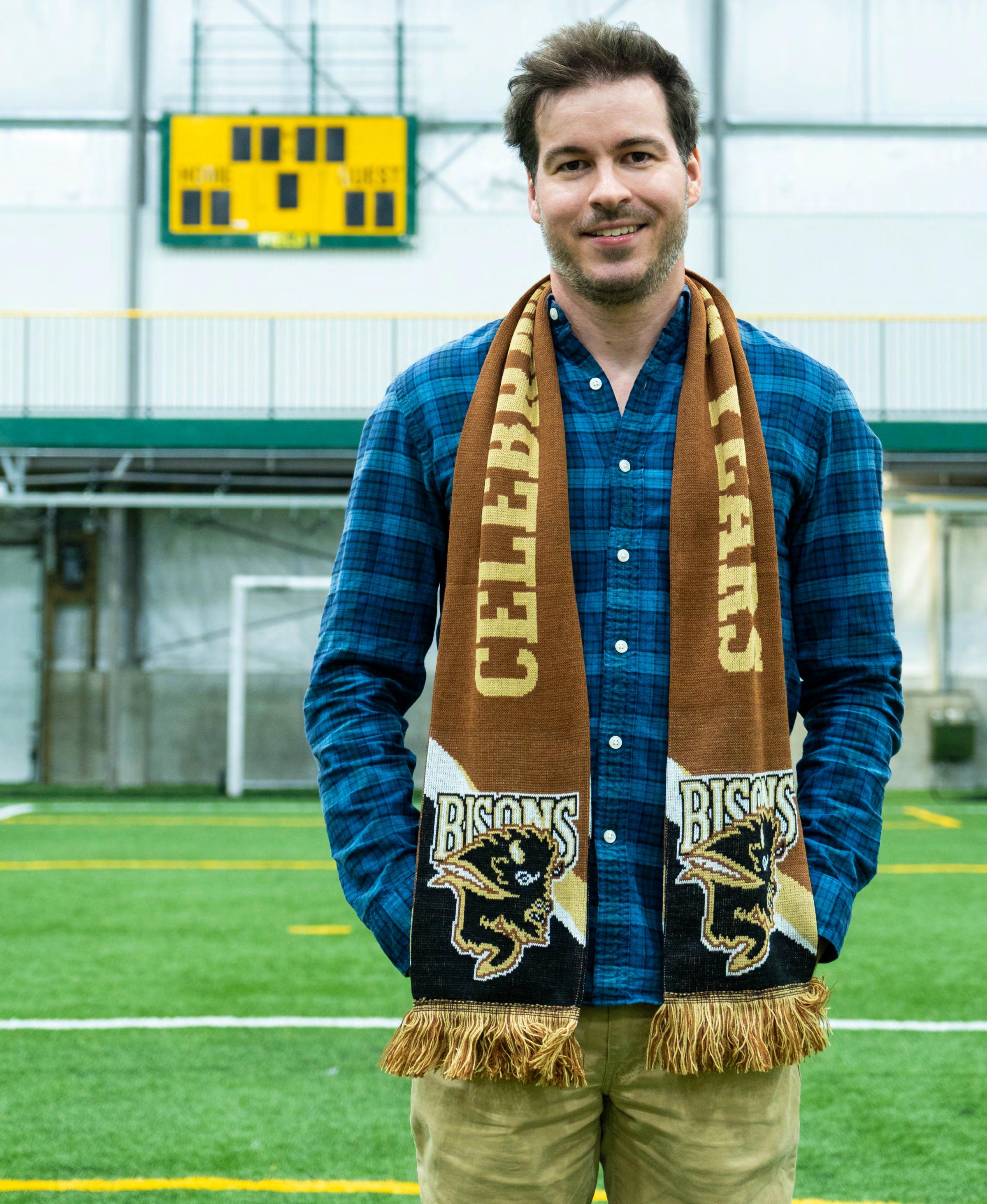
makes the playoffs, which, last year, unfortunately, we weren’t in the playoffs. It’s something that this year we have the potential, we have the talent to get there. And we want to be consistently representing the school in the playoffs, and then looking to push to hold ourselves to a higher standard and looking to compete and represent the prairies in Canada West in the national championships.”
identity and style of play he intends to implement. “It’s all about coming up with a style of play and a team identity that fits the way I view football, but also that suits the
mer, but also what’s going to get them excited.”
Colvin looks forward to playing his first match as the players continue their preparations for the upcoming season.
“Number one objective for us is we want to consistently be a team that makes the playoffs.”
— Mark Colvin, Bisons women’s soccer coach
He also spoke about the
qualities of our team. And so in those conversations I had with the players, it’s of course getting to know the players, what they’re up to in the sum-
“I’m super excited for that first U-Sports game. [...] The big message for myself, all the leaders and the team and the players is this renewed energy, and that ultimately what brings our group together is we’re super passionate about what
we do,” he shared. “All of our local players, they’ve been up training at 7 a.m., 8 a.m., both on the physical side and the soccer side, [also] all of our players are actively training and playing in leagues right now to stay sharp, preparing themselves for preseason.”
Colvin noted he is “very much looking forward to that first match at the end of August.”
You can see the Bisons women’s soccer team at their first home game against Mount Royal Cougars on West Turf Field Sept. 13 at 12 p.m.
PHOTO BY MIKE THIESSEN / STAFF
